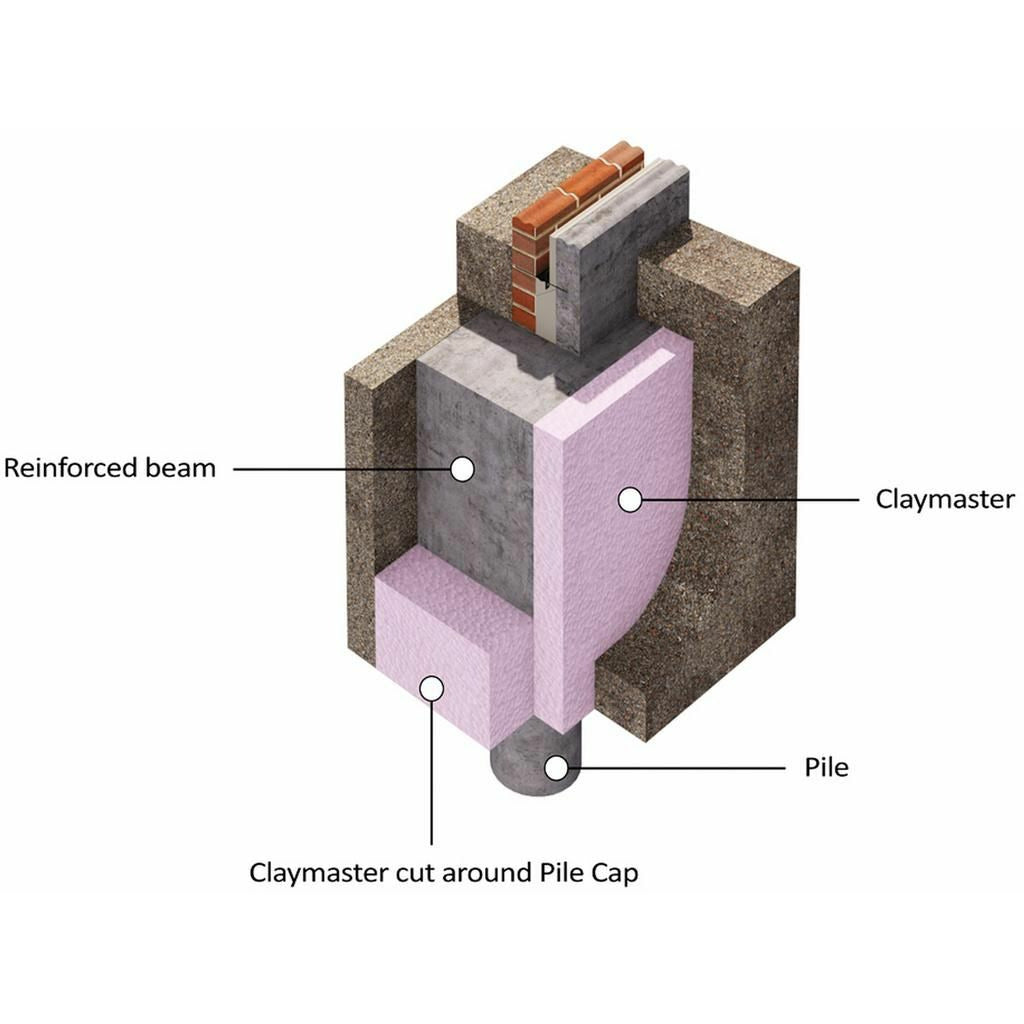Jablite Claymaster Board
Jablite Claymaster Board - 75mm / 8 is backordered and will ship as soon as it is back in stock.
Couldn't load collection availability

Delivery charges will vary depending on your location.
To find out delivery cost to your postcode, add the products your require to your basket and then review your basket, entering the delivery postcode
We look to dispatch all products same-day where possible, we use a close network of couriers we have worked alongside for a number of years and will share any and all shipping updates with you directly.
When Is Claymaster Required?
When you live in a clay soil area, some unique challenges present themselves during construction projects. In particular, the pressure exerted by concrete on those clay soil can create a process known as clay heave during the life of the building.
The solution is to use a clay heave board and one of the best known is Claymaster. Let’s look at what it is, how it works and how you install the products.
What is Claymaster?
Claymaster is a clay heave protection product that is used to prevent issues with a building’s foundations when they have been built into clay soils, especially those with a high ratio of mineral particles. This movement happens due to the pressure of the concrete and the moisture that is naturally present and can cause real structural problems to the building if left unchecked.
The products tend to be used where there are shrinkable clays. These are soils that have a large proportion of mineral particles but that is also less than 0.002mm in diameter. This soil is very solid when it is wet but the problem comes when it dries out, leaving a crumbly structure that isn’t great for foundations.
The solution is to use a Claymaster product to reduce the pressure from the concrete. 75mm Claymaster Board is the most popular while the 50mm Claymaster and 100mm Claymaster boards can be used in different situations.
Benefits of Claymaster boards
Claymaster boards are a popular way to deal with this problem because they offer a permanent solution to the issue of clay heave. The boards are easy to install and there’s very little compression due to concrete casting.
Furthermore, there’s no specialist equipment or even knowledge needed to install them. The boards are moisture resistant and lightweight as well as being very durable so they make for a cost-effective solution to the issue. They are also A+ rated in the BRE Green Guide to Specification.
How to install Claymaster
Claymaster boards are a pink colour to make them easy to spot and have enough compressive strength to withstand up to 600mm of wet concrete being placed directly onto them.
To install them around piled ground beams, trenches should be excavated as normal accommodating the thickness of Claymaster being used. The trench needs to have a flat bottom and granular fill or even concrete added to the bottom to achieve this.
Boards are laid at the bottom of the length, making sure that the full width is lined and the boards butt tightly together. The ground beam should then be placed with the right side, normally an inside face, lined with Claymaster to the required depth.
Supports and restraints are used to then keep everything in position during the placement of the concrete and spacer blocks can be used at the sides or vertical Claymaster boards positioned after the ground beam is cast.
Top quality solutions
Claymaster boards offer a top quality solution to the problem of clay soils and their potential for movement after construction. They are easy to install and require no special equipment so it is easy to bring them into any project where needed.

Description
Description
When Is Claymaster Required?
When you live in a clay soil area, some unique challenges present themselves during construction projects. In particular, the pressure exerted by concrete on those clay soil can create a process known as clay heave during the life of the building.
The solution is to use a clay heave board and one of the best known is Claymaster. Let’s look at what it is, how it works and how you install the products.
What is Claymaster?
Claymaster is a clay heave protection product that is used to prevent issues with a building’s foundations when they have been built into clay soils, especially those with a high ratio of mineral particles. This movement happens due to the pressure of the concrete and the moisture that is naturally present and can cause real structural problems to the building if left unchecked.
The products tend to be used where there are shrinkable clays. These are soils that have a large proportion of mineral particles but that is also less than 0.002mm in diameter. This soil is very solid when it is wet but the problem comes when it dries out, leaving a crumbly structure that isn’t great for foundations.
The solution is to use a Claymaster product to reduce the pressure from the concrete. 75mm Claymaster Board is the most popular while the 50mm Claymaster and 100mm Claymaster boards can be used in different situations.
Benefits of Claymaster boards
Claymaster boards are a popular way to deal with this problem because they offer a permanent solution to the issue of clay heave. The boards are easy to install and there’s very little compression due to concrete casting.
Furthermore, there’s no specialist equipment or even knowledge needed to install them. The boards are moisture resistant and lightweight as well as being very durable so they make for a cost-effective solution to the issue. They are also A+ rated in the BRE Green Guide to Specification.
How to install Claymaster
Claymaster boards are a pink colour to make them easy to spot and have enough compressive strength to withstand up to 600mm of wet concrete being placed directly onto them.
To install them around piled ground beams, trenches should be excavated as normal accommodating the thickness of Claymaster being used. The trench needs to have a flat bottom and granular fill or even concrete added to the bottom to achieve this.
Boards are laid at the bottom of the length, making sure that the full width is lined and the boards butt tightly together. The ground beam should then be placed with the right side, normally an inside face, lined with Claymaster to the required depth.
Supports and restraints are used to then keep everything in position during the placement of the concrete and spacer blocks can be used at the sides or vertical Claymaster boards positioned after the ground beam is cast.
Top quality solutions
Claymaster boards offer a top quality solution to the problem of clay soils and their potential for movement after construction. They are easy to install and require no special equipment so it is easy to bring them into any project where needed.
Payment & Security
Payment methods
Your payment information is processed securely. We do not store credit card details nor have access to your credit card information.










